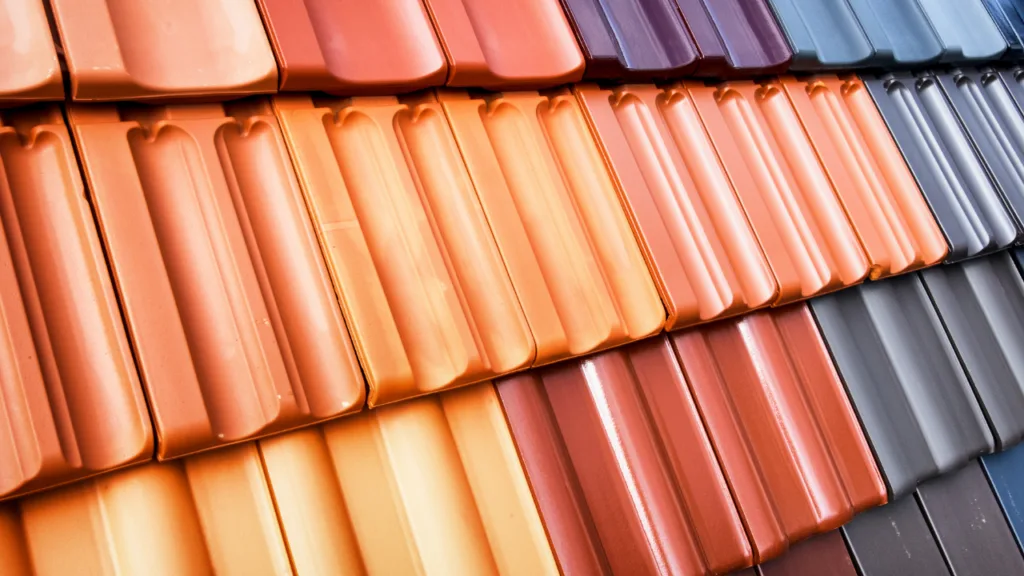
Roof tiles are an essential component of any home’s roofing system, protecting it from the elements and adding to its overall aesthetic appeal. However, over time, the color of roof tiles can fade or become outdated, leading homeowners to consider painting them.
But can all types of roof tiles be painted, and is it a good idea? In this article, we’ll answer these questions and more. We’ll explore which types of roof tiles can be painted and share expert tips on the best techniques for a successful paint job.
From clay to concrete to slate tiles, we’ll cover it all. Whether you’re looking to refresh the look of your home or add value to a property, this guide will help you make an informed decision about painting your roof tiles.
So, let’s dive in and discover which types of roof tiles can be painted!
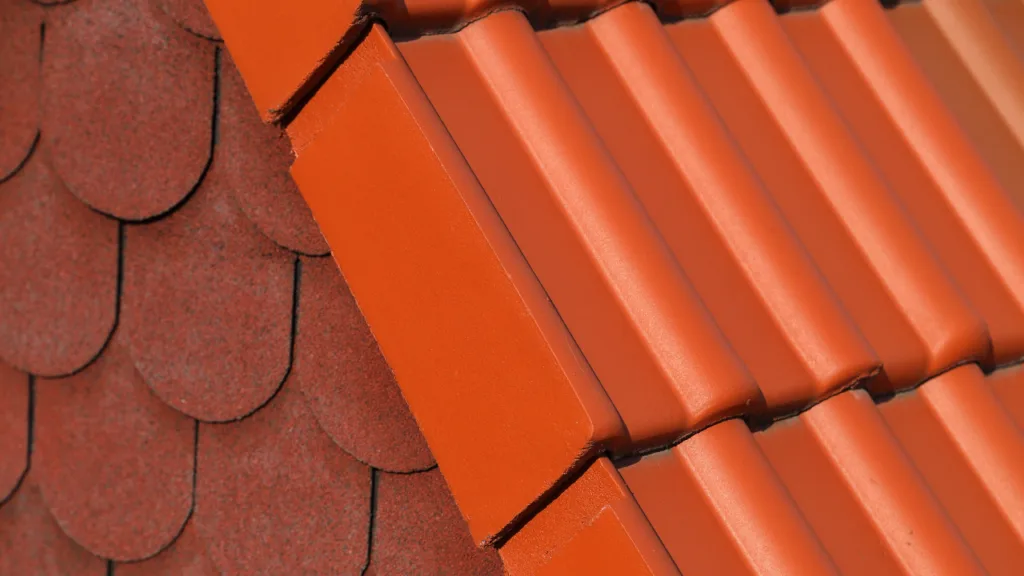
Can Roof Tiles Be Painted?
Concrete Roof Tiles
Yes, concrete roof tiles can be painted. Choose either oil-based or water-based paint for the project, each with its benefits. Oil-based paint offers better coverage and protection but is more challenging to clean up.
In contrast, water-based paint is easier to clean but might not provide as much coverage or protection.
Clay Roof Tiles
Clay roof tiles can be painted as well. Similar to concrete tiles, you can opt for oil-based or water-based paints for your clay roof tiles.
Keep in mind the different characteristics of these paints when selecting one for your project.
Slate Roof Tiles
It is indeed possible to paint slate roof tiles. Again, the same options of using oil-based or water-based paints apply, and your choice will depend on your personal preferences and how much coverage or protection you want your paint to provide.
Terracotta Roof Tiles
Unfortunately, terracotta roof tiles cannot be painted. This is because they are manufactured with a ceramic glazed coating, which prevents paint from adhering to the surface.
So, painting terracotta tiles is not recommended.
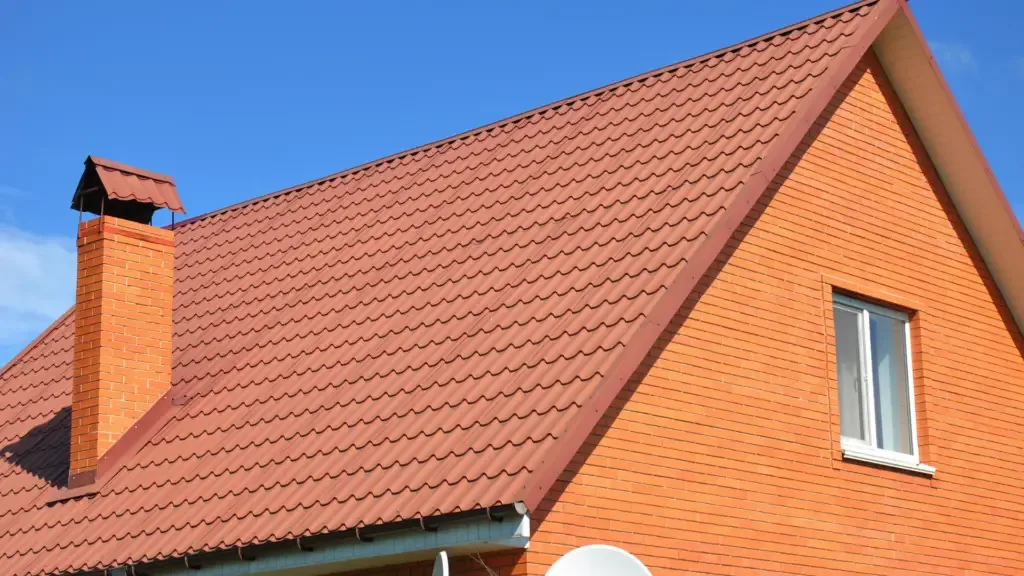
Metal Roof Tiles
Metal roof tiles can be painted, but it is essential to choose a paint specifically designed for metal surfaces. These paints typically contain rust inhibitors to help protect against corrosion.
Be sure to follow the manufacturer’s instructions when applying the paint to ensure proper adhesion and protection.
Composite Tiles
Composite tiles, also known as synthetic or engineered tiles, can generally be painted. As with other roof tile materials, pick either oil-based or water-based paint according to your desired paint characteristics.
Rubber Tiles
Rubber roof tiles can be painted using specialized rubber paint or a paint specifically designed to adhere to rubber surfaces. Ensure you follow the manufacturer’s instructions regarding the application process for the best results.
Asphalt Shingles
Asphalt shingles can be painted, but it is not a common practice, and you should carefully consider whether it’s necessary. Some professionals recommend using a 100% acrylic paint for asphalt shingles as it is more flexible and prone to cracking.
Remember to check the manufacturer’s warranty before painting your asphalt shingles, as it may void your warranty.
In summary, various roof tile materials can be painted, but it’s crucial to know which types and use appropriate paints and techniques. Remember that each roof tile type will have its own specific requirements, so proper research and planning will be essential for a successful painting project.
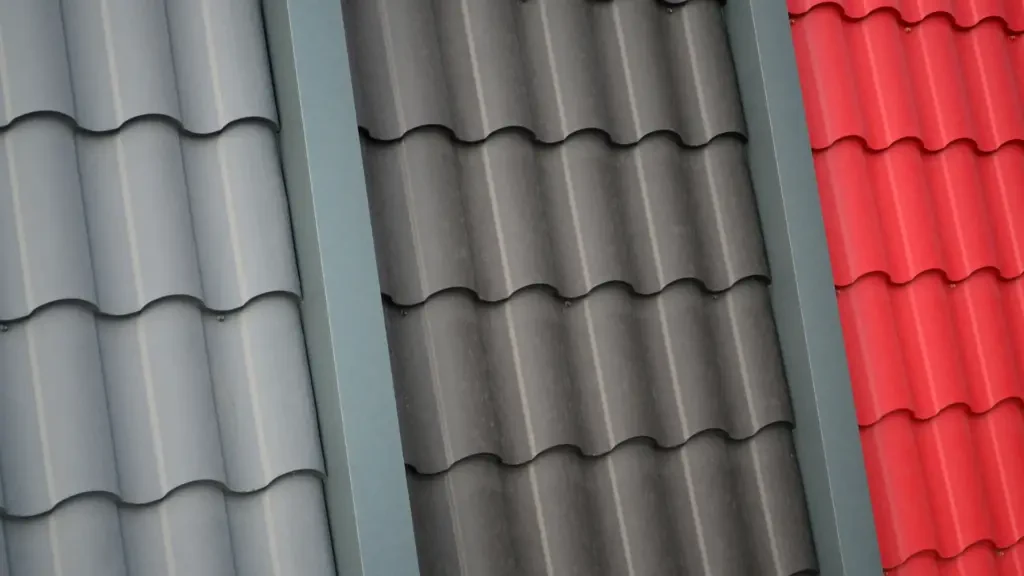
Type of Paint
Choosing the right type of paint for your roof tiles is essential to ensure durability and long-lasting results. Let’s look at the various options available for painting roof tiles.
Acrylic Paint
Acrylic paint is a popular option for painting roof tiles. This water-based paint adheres well to surfaces like clay, concrete, and slate tiles.
For best results, use a two-coat process: apply a primer first, followed by the actual color.
Latex Paint
Latex paint is another suitable option for roof tiles. It provides good adhesion to various surfaces and is easy to clean up with water. Similar to acrylic paint, using a primer before applying latex paint can enhance its performance and extend the life of the paint job.
Oil-based Paints
While oil-based paints can be used on roof tiles, they are less common due to their longer drying times and potential environmental concerns. If you choose to use an oil-based paint, keep in mind that it will require a more careful application and cleaning.
Water-based Acrylic Paints
Water-based acrylic paints are a mixture of acrylic and latex paints. They offer the benefits of both types of paint, providing good adhesion and easy clean-up. This makes them an ideal choice for various roof tile materials.
Damp-proof Paint
Damp-proof paint is specifically designed to prevent moisture penetration, making it an excellent option for roof tiles in areas with high humidity or frequent rainfall. Damp-proof paint is often epoxy, acrylic, or latex-based and provides added protection for your roof tiles.
High-quality Paint
When choosing paint for your roof tiles, it’s essential to select high-quality paint that can withstand the elements and provide long-lasting results. Investing in high-quality paint will ultimately save you time and money by reducing the need for frequent touch-ups or repairs.
Remember, the right type of paint for your roof tiles will depend on the material of the tiles and specific requirements of your region’s climate. Make sure to consult a professional if you’re unsure about which paint is best for your specific situation.
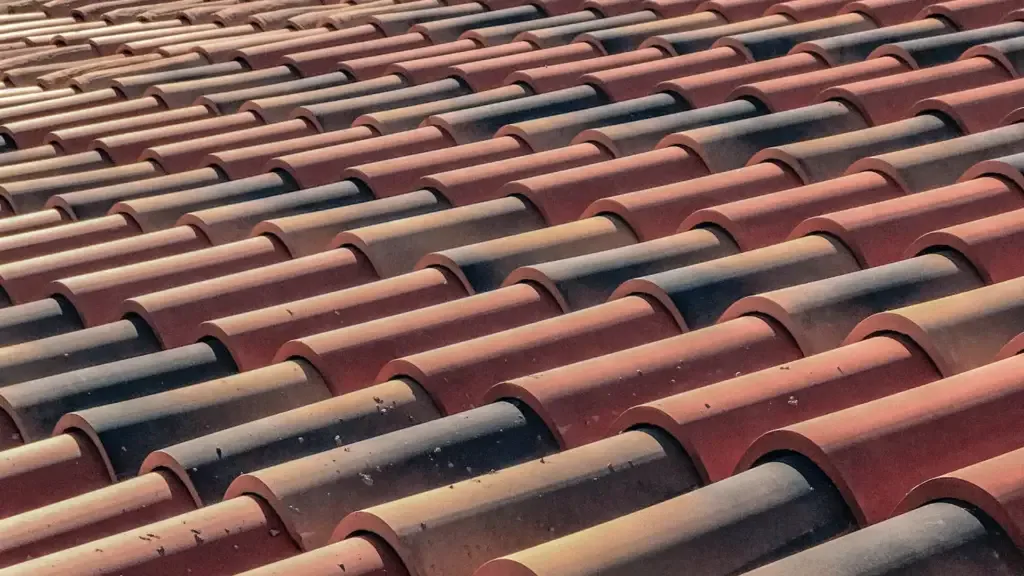
Steps to Paint Roof Tiles
Preparation
Before starting the painting process, inspect your roof tiles for any damages, such as cracks or chips, and make repairs as necessary. Then, clean the tiles thoroughly using a pressure washer or a brush and a suitable cleaning solution.
This will help remove dirt, moss, and other debris from the surface. Allow the roof to dry completely before proceeding to the next step.
Priming
Before applying paint, it’s crucial to prime your roof tiles with an appropriate primer. Consult the manufacturer’s instructions for the appropriate type to use, as well as the recommended number of coats.
Priming not only helps the paint adhere better to the surface but also improves the durability and longevity of the paint job. Apply the primer evenly, ensuring you cover all areas of the roof and allow it to dry according to the manufacturer’s instructions.
Painting
With the roof primed, it’s now time to apply the paint. Choose a paint specifically designed for roof tiles, as this will provide better protection against the elements and UV rays.
Ensure you have the right equipment for the job, such as a paint sprayer or roller, and follow the manufacturer’s instructions for application. Depending on the type of paint and the condition of your roof, you may need to apply multiple coats for optimal coverage.
Remember to allow each coat to dry thoroughly before applying the next one.
Sealing
After the paint has completely dried, it’s important to seal your roof tiles. Caulk any gaps or seams to prevent water infiltration, which could damage the newly painted surface.
Finally, consider applying a sealer to provide additional protection against the elements. This will help extend the life of your paint job and ensure your roof looks great for longer.
Remember to follow safety precautions while working on your roof, such as using a roof harness or having a spotter to help prevent falls. By following these steps, you can successfully paint your roof tiles and give your home a refreshed appearance.
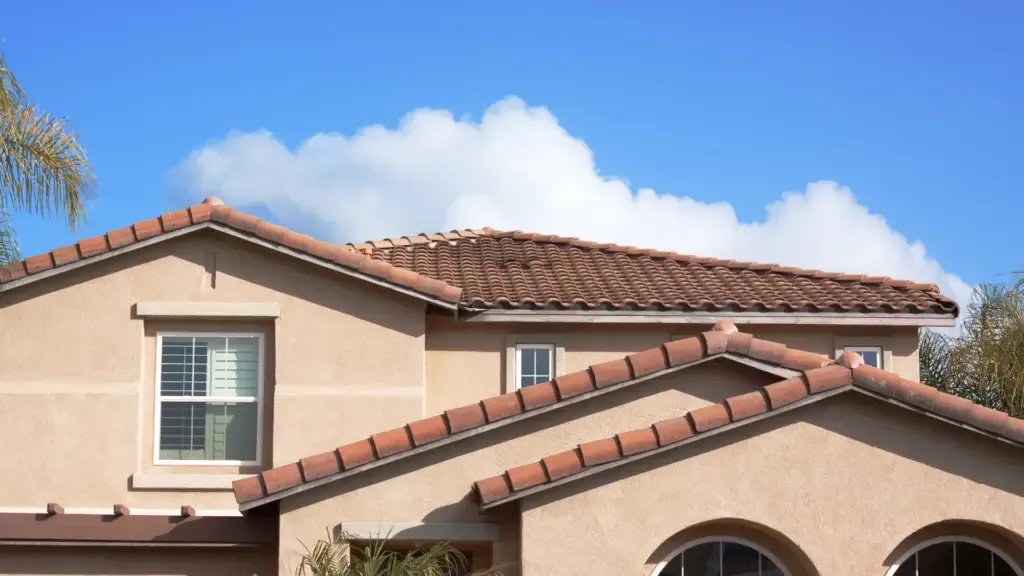
Pros and Cons of Painting Roof Tiles
Pros
- Aesthetic appeal: Painting your roof tiles can significantly improve the appearance of your home, giving it a more modern and stylish look.
- Durability: Applying a coat of paint can add an extra layer of protection to your roof tiles, increasing their lifespan and resistance to weather damage and UV rays.
- Maintenance: Painted roof tiles can potentially be easier to maintain, as the paint may prevent fungal growth and make cleaning less frequent compared to unpainted tiles.
- Energy efficiency: Painting your roof tiles in lighter colors can increase the reflection of sunlight, which may contribute to keeping your home cooler during hot weather and reducing energy costs.
Cons
- Diminished durability: Painted roof tiles may not be as durable as unpainted ones since the paint can chip and fade over time due to exposure to direct sunlight or extreme weather conditions.
- Difficulty in application: Applying paint evenly on roof tiles can be challenging, especially if the tiles have a textured surface. This may require professional help, increasing the cost.
- Roof damage risk: There is a chance that painting roof tiles could potentially lead to roof damage if not correctly applied, as some paints might cause the tiles to become brittle and more susceptible to cracking or breaking.
- Reduced fire resistance: Depending on the type of paint and tile material, painting roof tiles may decrease their fire resistance, posing a potential risk to your home’s safety.
Keep in mind to carefully consider these pros and cons before deciding to paint your roof tiles, and always consult with a professional to ensure the best results and to avoid any negative outcomes.
Cost and Budget Considerations
When considering painting your roof tiles, it’s essential to take into account the costs and budget for the project. The expenses can be broken down into several components, including material and labor costs.
Typically, you can expect to pay between $4 and $10 per square foot for the materials required to paint your roof tiles. For example, if your roof is 1,500 square feet, your material costs will range from $6,000 to $15,000.
Labor costs are another essential aspect to consider. Hiring a professional painter can streamline the project, but it may increase the overall expense. Their fees will depend on the complexity and size of your roof.
Alternatively, you may choose to undertake a DIY project, saving on labor costs but requiring more time and effort on your end.
Some costs to keep in mind when choosing to paint your roof tiles include:
- Paint type: Damp-proof epoxy, acrylic, and latex paints are recommended for roof tiles. The paint choice could impact the overall cost, so take the time to shop around and find a balance of quality and affordability.
- Roof tile type: Rough tiles like concrete, clay, and slate are more accessible to paint, making them more cost-effective. Polished tiles can be more challenging and potentially more expensive due to the need for specific paint types or additional prep work.
- Finishes: Matte and gloss finishes can add a personal touch to your roof tiles. However, the finish you choose may impact the cost. Make sure to research and compare prices before making your final decision.
When planning to paint your roof tiles, ensure you create a thorough budget that considers all relevant costs. By doing so, you can make a more informed decision on whether painting your roof tiles is the most cost-effective solution for your home.
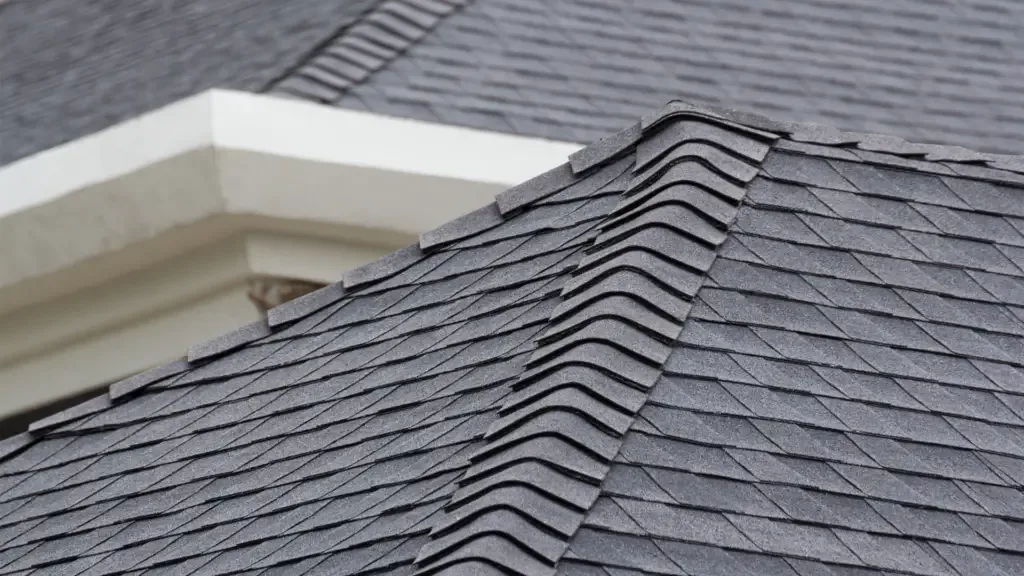
Best Time and Conditions to Paint a Roof
Choosing the right time and conditions to paint your roof is essential for the longevity and effectiveness of the paint. To achieve the best results, take into consideration the following factors:
- Weather conditions: Check the local forecast before starting your project. Ideally, plan to paint your roof on a dry day with low humidity and temperatures between 50°F (10°C) and 80°F (27°C). Avoid hot, windy, or rainy conditions, as they can negatively affect the paint application and drying process.
- Sun exposure: It’s best to paint your roof during a time of day when the sun isn’t directly hitting the surface. This will prevent overheating and help ensure the paint dries evenly, reducing the risk of bubbling or peeling.
- Roof condition: Inspect your roof tiles for any damage or repairs needed before painting. Fix any loose, cracked, or broken tiles, and clean the surface thoroughly to remove dirt, moss, and algae. A properly prepared surface will ensure better adhesion and longer-lasting results.
Here’s a quick summary to guide you on the best time and conditions to paint your roof:
- Dry day with low humidity
- Temperature between 50°F (10°C) and 80°F (27°C)
- Avoid direct sunlight
- Repair and clean the roof surface prior to painting
By carefully considering these factors, you can ensure that your painted roof will look great and provide the protection and longevity you desire. Now that you know the optimal time and conditions, get ready to transform your roof with a fresh coat of paint.
Frequently Asked Questions
Can roof tiles be painted?
Yes, roof tiles can be painted. However, this depends on the type of roof tile. You can paint concrete, clay, and slate tiles, but terracotta roof tiles typically cannot be painted due to their ceramic glazed coating.
Which types of roof tiles can be painted?
- Concrete roof tiles
- Clay roof tiles
- Slate roof tiles
These types can be painted to extend their life and improve their appearance. Remember to use high-quality products for the best results.
Are there types of roof tiles that cannot be painted?
Terracotta roof tiles are not suitable for painting. The ceramic glaze on these tiles protects them from the elements and makes it difficult for paint to adhere to the surface.
What are the benefits of painting roof tiles?
Painting your roof tiles can have several benefits, such as:
- Extending the life of your tiles
- Renovating and refreshing the appearance of your roof
- Providing an additional layer of protection against weathering
- Potentially increasing energy efficiency by reflecting sunlight
What type of paint should be used for roof tiles?
When painting your roof tiles, it is essential to choose a paint specifically designed for roofing applications. This helps to ensure proper adherence, durability, and weather resistance.
Some popular options include acrylic, elastomeric, and solar-reflective paints. Make sure to follow the manufacturer’s instructions for preparation and application to achieve the best results.
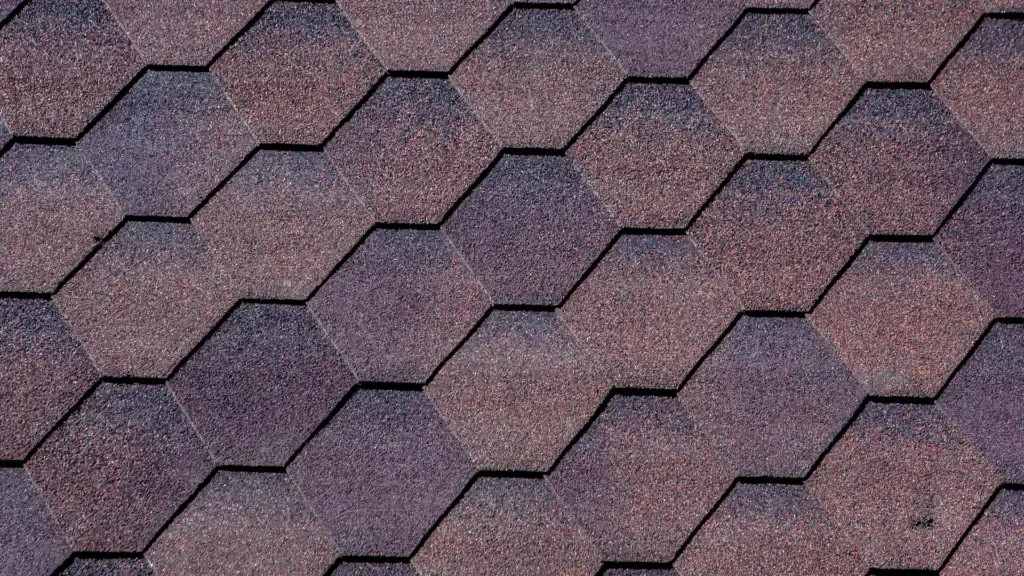
Important Tips and Precautions
When painting your roof tiles, there are several important tips and precautions to consider for the best results and to maintain the long-term health of your roof.
First and foremost, prioritize safety precautions. Use a sturdy ladder, wear slip-resistant shoes or boots, and ensure you have proper fall protection if necessary. Make sure to work with a partner when possible for additional safety and support.
Before you attempt to paint over your tiles, clean your roof thoroughly. This allows the paint to adhere to the tiles and ensures you’re not painting over debris or mold and mildew growth.
Clear away any debris, such as leaves or branches, using a broom or a leaf blower.
Next, clean your roof tiles using a power washer or a wide spray nozzle to remove dirt, grime, and any mold or mildew. Be cautious when using a power washer, as it can potentially damage the tiles if used with excessive pressure.
You can apply a bleach solution to address any stubborn mold and mildew growth.
Inspect your roof for any damage, such as cracks or missing tiles, and make repairs as necessary before painting. Check for rust on the metal flashing or other metallic parts of your roof, and remove it using a wire brush or a specialized rust remover product.
When selecting paint for your roof tiles, note that not all materials are compatible with every type of paint. In general, asphalt shingles, metal sheeting, concrete, slate, and clay tiles can be painted, but terra-cotta tiles typically cannot.
Be cautious with rubber tiles, as painting over them may affect their performance or longevity. Always verify that the paint you choose is suitable for your particular roof material and follow the manufacturer’s guidelines for application.
Remember that while painting your roof tiles can provide various benefits – such as enhancing their appearance, preventing mold and mildew growth, and reflecting heat – the ultimate success of your project depends on following these tips and precautions.
Properly preparing your roof and using the right materials will help ensure a successful outcome and extend the life of your roof.
